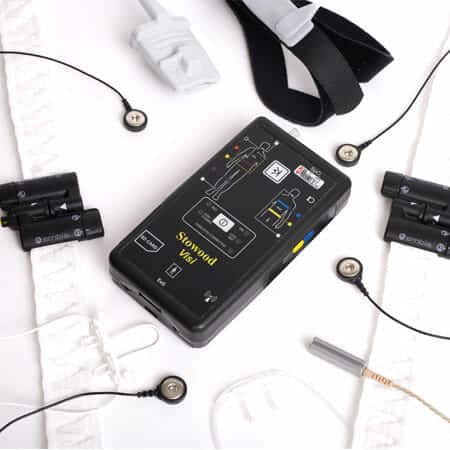What is Home Sleep Apnoea Testing?
Home Sleep Apnoea Testing (HSAT) is the objective assessment of an individual’s sleep quality and quantity, carried out in their own home.
Historically sleep testing was performed exclusively in a hospital. Today, with technological advances, it is possible (and some consider preferrable) for sleep tests to be performed at home.
How home sleep apnoea testing works
The individual wears the HSAT device overnight, most commonly on a belt around their chest (and sometimes stomach too), with various additional sensors attached, including those that monitor airflow through their nose and the oxygen level in their blood.
Upon waking in the morning, the device is removed and returned to the hospital, so that the recorded data can be assessed.
Commonly, in conjunction with a comprehensive paper questionnaire (about the individual’s reported sleepiness and medical history etc.).
The data
The data from the HSAT device is then ‘scored’ using a software program and a report created. This (and when necessary the raw data) is then reviewed by a Sleep Physiologist.
Then a Consultant Physician will review the software report and the Sleep Physiologist’s assessment and provide their professional opinion/diagnosis.
The rules
The rules around home sleep apnoea testing vary.
In some countries dependent upon the number of parameters assessed overnight (machine sophistication) and the completeness of the questionnaire, the report is sufficient for a diagnosis of obstructive sleep apnoea.
While in other countries home sleep apnoea testing is used, in perhaps a less formal way, to identify those that require further investigation in a hospital or sleep laboratory.
Created by Adrian Zacher | Page last updated 21 Jan 2021

